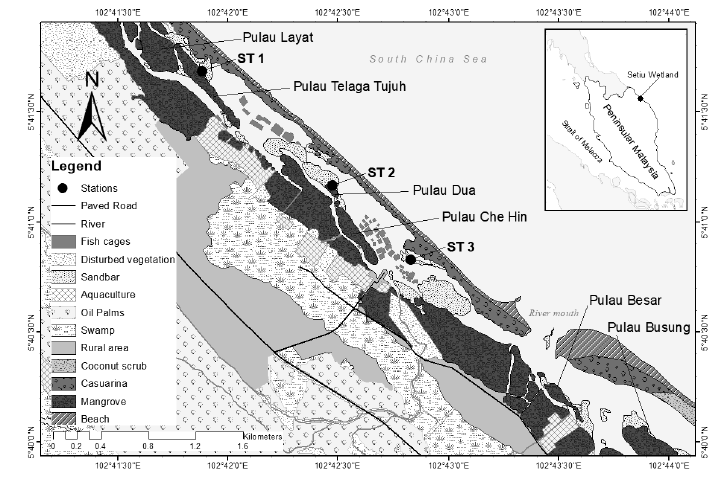Abundance of three coexisting gastropod species (Cerithidea cingulata, Cerithium coralium and Batillaria zonalis) in the lagoon area of Setiu Wetlands, Terengganu, Malaysia
DOI:
https://doi.org/10.17762/sfs.v9i1.24Keywords:
Coexisting gastropod, Setiu Wetlands, Abundance, Lagoon, CompetitionAbstract
The lagoon area of Setiu Wetlands, Terengganu, functions as essential habitat for gastropods. Nevertheless, little ecological research on the coexisting gastropod species in the habitat has been conducted in this area. This study was conducted to determine the abundance of the coexisting gastropods species (Cerithidea cingulata, Cerithium coralium and Batillaria zonalis) in the lagoon area of Setiu Wetlands and to investigate the factors that allowed the gastropod species to coexist in the lagoon area of Setiu Wetlands. The samples were collected at three stations selected along the Setiu Lagoon. The Transect Lines and Quadrat technique was used to estimate the abundance of the gastropod species in each station. C.coralium was found to be the most common coexisting species (45 % of the total number of gastropods sampled), followed by C.cingulata (39%) and B.zonalis (16%). The interaction between each gastropod species has resulted in different composition for all three species. The Bray-Curtis similarity by PRIMER V6 revealed that the coexisting gastropod species studied are divided into two main clusters with 67% similarities. C.cingulata and C.coralium are grouped in one cluster. At the same time, B.zonalis is alone in the other cluster. The similarities are due to their niche, which is the habitat preferences. The types of interaction that occur is competition, which is interspecific competition. The increase and decrease in the abundance of a species in a habitat affect the abundance of other species in the habitat. The factors that allow the coexistence of all the three gastropod species are resource partitioning, where they have different feeding modes (deposit-feeding and suspension-feeding) and different times of feeding (feed during high or low tide). Microhabitat is also one of the factors which the gastropods are found in patches and far away from each species to decrease the competition among them. The findings are expected to be helpful as a basis for the ecology and taxonomy study of gastropod species in the future.










